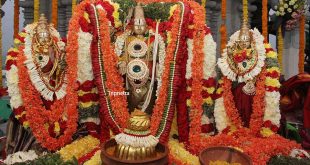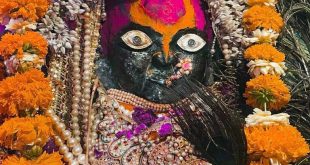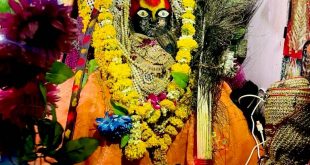Shirdi Gurusthan
Shirdi Gurusthan is the “place of Guru”. Sai Baba spent most of the time on his first visit to Shirdi. Therefore Gurusthan is an important place in Shirdi. According to Baba, the Samadhi of his own Guru is in the form of a Neem tree. When some of the villagers dig the place the found an uncertain thing, just behind the neem tree some bricks are in the soil and seemed like a tunnel. They were surprised opening the tunnel a lamp is lit and is like a place stayed previously. The villagers asked baba what to do and Baba suggested them not to disturb as the site is of his ancestors.
One can only understand the significance of Gurusthan only when they understand the importance of the Guru. Spiritual knowledge and learning are not necessary according to Baba rather “Trust in Guru is the only Sadhana”. Devotees’ knowing his life and teachings infuses his trust and shows them that Baba life was itself the incarnation of the central truth. Biography of Sai baba is a perfect example of what the Guru and Sishya mean, and the trust that guides their mutual relation.
The main attraction of the Gurusthan is the huge neem tree. Generally, the leaves of the neem tree are bitter but the leaves of the tree in Gurusthan are sweet. This tree gave shelter for few years to Baba.
One story concerning the neem tree defines how Sai Baba is practical and down-to-earth. In the early 1900’s after Baba moved to Dwarakamai, there was an obstruction for the construction of Sathe Wada by a long branch of a tree. As it became scared by Baba’s stay under it nobody wants to remove it. When Baba was asked for his advice he told the villagers ‘Cut off, however, is obstructing with the construction, even if it is a baby in the mothers’ womb’. With these words uttered by Baba, no one dared to cut the branch. Eventually, Baba himself climbed the tree and cut the branch.
Another reason for villagers opposing to trim the tree might be sometimes later a boy climbed the tree to trim and had fallen to the ground and died. At the time of happening baba was in mosque telling something wrong is going to happen by blowing Sanka. Baba does this usually when the devotees are in great danger. The villagers linked the boy’s death with the attempt of pruning the tree according to the words uttered by Baba who couldn’t see from mosque what was going o be done at Gurusthan and were afraid to do anything that might have been a sin.
Today Gurusthan is adorned with Pair of Marble Padukas on a pedestal, Shivlingam and a statue of baba along with Neem tree. The Baba statue in Gurusthan was carved with the grandson of the sculptor of the Baba Statue of Samadhi Mandir. The Padukas comprises of conch, lotus and Mahavishnu wheel and the 2 Sanskrit Slokas about the greatness of the neem tree and baba’s power. These Slokas are the part of Sri Sainatha Mahima Stotram which is sung in the Madhyan and Evening Aarthis. The slokas are
“I bow to Lord Sainath, who by his constant stay at the foot of the neem tree – which although bitter and unpleasant, was yet oozing nectar – made it better than the wish-fulfilling tree”.
“I bow to Lord Sainath, who always takes delight in resting under the neem tree and bestowing material and spiritual prosperity upon his devotees who lovingly attend on him”.
The Padukas were made in Mumbai and were sent to Shirdi. The Padukas were taken from Khandoba Mandir to Dwarakamai where Baba touched them and and said the Padukas belong to allah and are to be placed them at the foot of Neem Tree.
Few months later after placing the Padukas, they were damaged by a madman who also destroyed some of the idols of Temple. The villagers were very distressed but baba took it casual and told them simply to repair the cracks with cement. Later the broken Padukas were replaced by the original and are placed below the pedestal.
The Lingam that is seen now in Gurusthan has the same one that Baba lovingly handed it to Megha Shyam the ardent devotee of Shri Sai Baba.
A small dhuni is kept in front of the Shrine in Gurusthan. Until recently the dhuni is set on fire with the cinder brought from the Dwarakamai, but now this is done only on Thursdays and Fridays.
Number of Devotees since 1980’s started doing Pradakshinas around the tree throughout the day and night. Some sit quietly under the shade of the tree thinking it as a powerful place. Some people believe the tree as a symbol of the Guru’s grace.
 Hotel Booking, Tour and Travel Planning, Online Tickets Tour Planning, Designing Packages, Hotel Booking
Hotel Booking, Tour and Travel Planning, Online Tickets Tour Planning, Designing Packages, Hotel Booking


